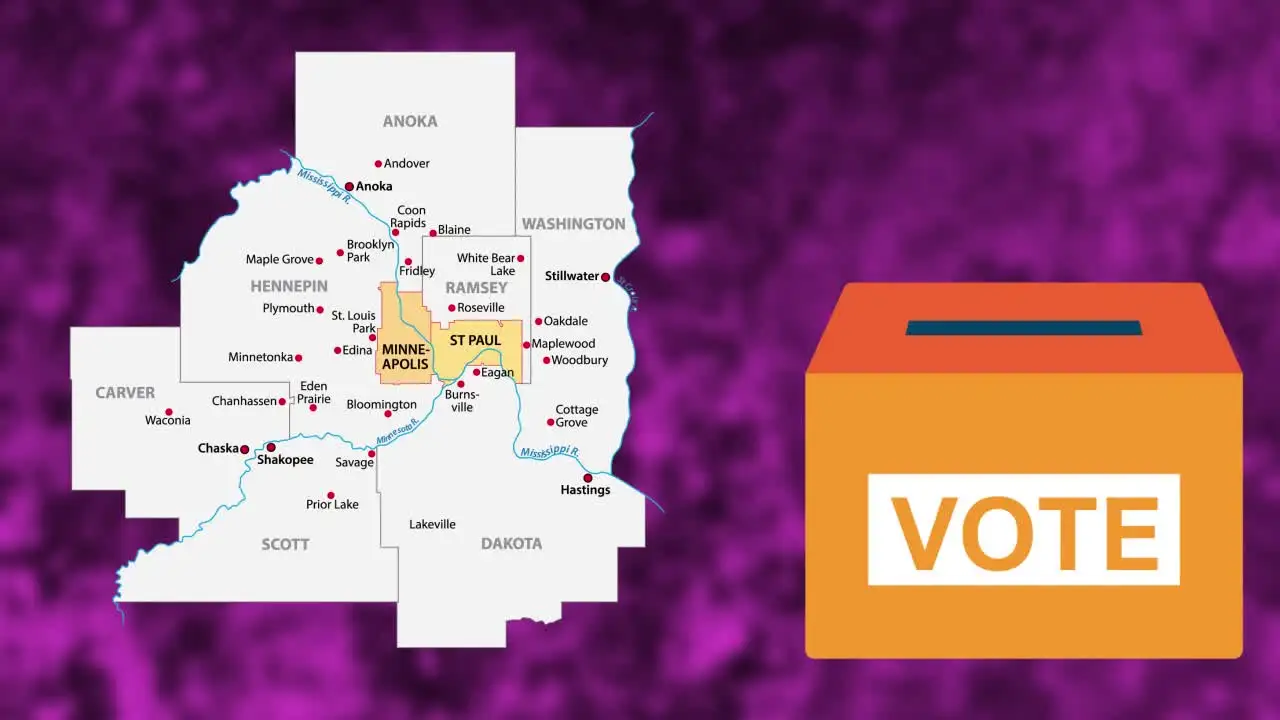Copyright FOX 9

With Election Day less than a week away, this guide will show how ranked choice voting works and which cities in Minnesota use it. READ MORE: Minnesota 2025 election guide: What's on your ballot, how and where to vote Minnesota cities using ranked choice voting Big picture view: Two of the largest cities in Minnesota use this system. Minneapolis and St. Paul have used ranked choice voting for local offices for more than a decade. Several cities in the metro area have followed their lead, with five cities in Minnesota holding ranked choice elections — Minneapolis, St. Paul, St. Louis Park, Bloomington and Minnetonka. What is ranked choice voting: Voters can rank multiple candidates in order of preference. Political Science and Law professor David Schultz, who is in the process of co-editing a book on the system, spoke on the impact this has on the race. "Imagine you went into a restaurant, and you asked the restaurant, what’s for dinner tonight? And they say they have chicken, fish, or beef. And you say my first choice is chicken. And they come back and they say, well, we’re out of chicken, what’s your second choice, you say it’s fish. In some sense, that’s ranked-choice voting," said Schultz, professor at Hamline University. It is also known as instant run-off voting. Minneapolis was the first city in the state to use it in 2009. Minneapolis voters can rank up to three candidates. St. Paul voters can rank up to six. How it works: For example, this is how the counting process and results play out in a single-seat election. A candidate needs a majority to win, meaning more than 50% of the vote, so 50% + 1. That could happen after all first-choice votes are counted, and a candidate could win outright. If not, candidates with the fewest votes and who mathematically cannot win will be eliminated. Then, it goes to the next round for an instant run-off. So, in round 2, those ballots’ votes are transferred over to their second choice. Then the results are added up. If a candidate has enough votes to win, the race is over. If not, the process of elimination repeats until a candidate wins with a majority. What the impact has been: Jeanne Massey, executive director of FairVote Minnesota and an advocate for ranked-choice voting said she has seen it working as it was designed to. "Allow more voice for people. More choice on the ballot. Let third parties have an opportunity to run. And at the end of the day, the candidate who wins will have a majority of the vote," said Massey. Schultz said there needs to be more studies looking at this alternative to a more traditional voting system. "I still describe ranked-choice voting as an experiment. We don’t have a final answer yet in terms of is it working or is it not working overall," said Schultz. What's next: Early voting is underway. Election Day is Nov. 4.



